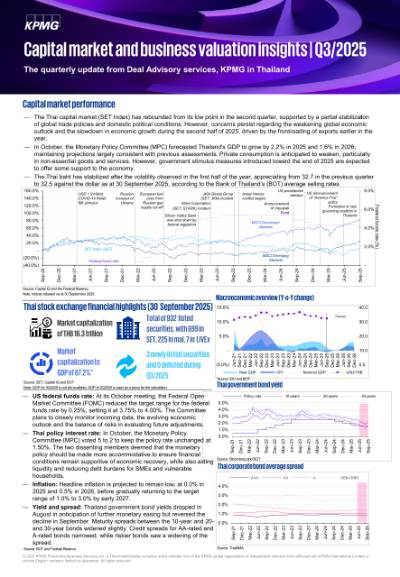Capital market performance
- The Thai capital market (SET Index) has rebounded from its low point in the second quarter, supported by a partial stabilization of global trade policies and domestic political conditions. However, concerns persist regarding the weakening global economic outlook and the slowdown in economic growth during the second half of 2025, driven by the front-loading of exports earlier in the year.
- In October, the Monetary Policy Committee (MPC) forecasted Thailand's GDP to grow by 2.2% in 2025 and 1.6% in 2026, maintaining projections largely consistent with previous assessments. Private consumption is anticipated to weaken, particularly in non-essential goods and services. However, government stimulus measures introduced toward the end of 2025 are expected to offer some support to the economy.
- The Thai baht has stabilized after the volatility observed in the first half of the year, appreciating from 32.7 in the previous quarter to 32.5 against the dollar as at 30 September 2025, according to the Bank of Thailand’s (BOT) average selling rates.

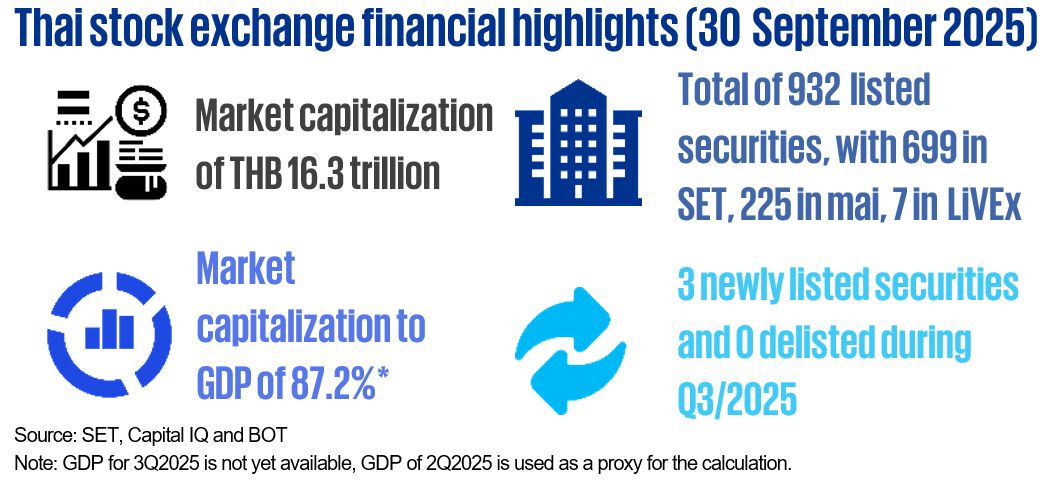
- US federal funds rate: At its October meeting, the Federal Open Market Committee (FOMC) reduced the target range for the federal funds rate by 0.25%, setting it at 3.75% to 4.00%. The Committee plans to closely monitor incoming data, the evolving economic outlook and the balance of risks in evaluating future adjustments.
- Thai policy interest rate: In October, the Monetary Policy Committee (MPC) voted 5 to 2 to keep the policy rate unchanged at 1.50%. The two dissenting members deemed that the monetary policy should be made more accommodative to ensure financial conditions remain supportive of economic recovery, while also aiding liquidity and reducing debt burdens for SMEs and vulnerable households.
- Inflation: Headline inflation is projected to remain low, at 0.0% in 2025 and 0.5% in 2026, before gradually returning to the target range of 1.0% to 3.0% by early 2027.
- Yield and spread: Thailand government bond yields dropped in August in anticipation of further monetary easing but reversed the decline in September. Maturity spreads between the 10-year and 20- and 30-year bonds widened slightly. Credit spreads for AA-rated and A-rated bonds narrowed, while riskier bonds saw a widening of the spread.
Source: BOT and Federal Reserve
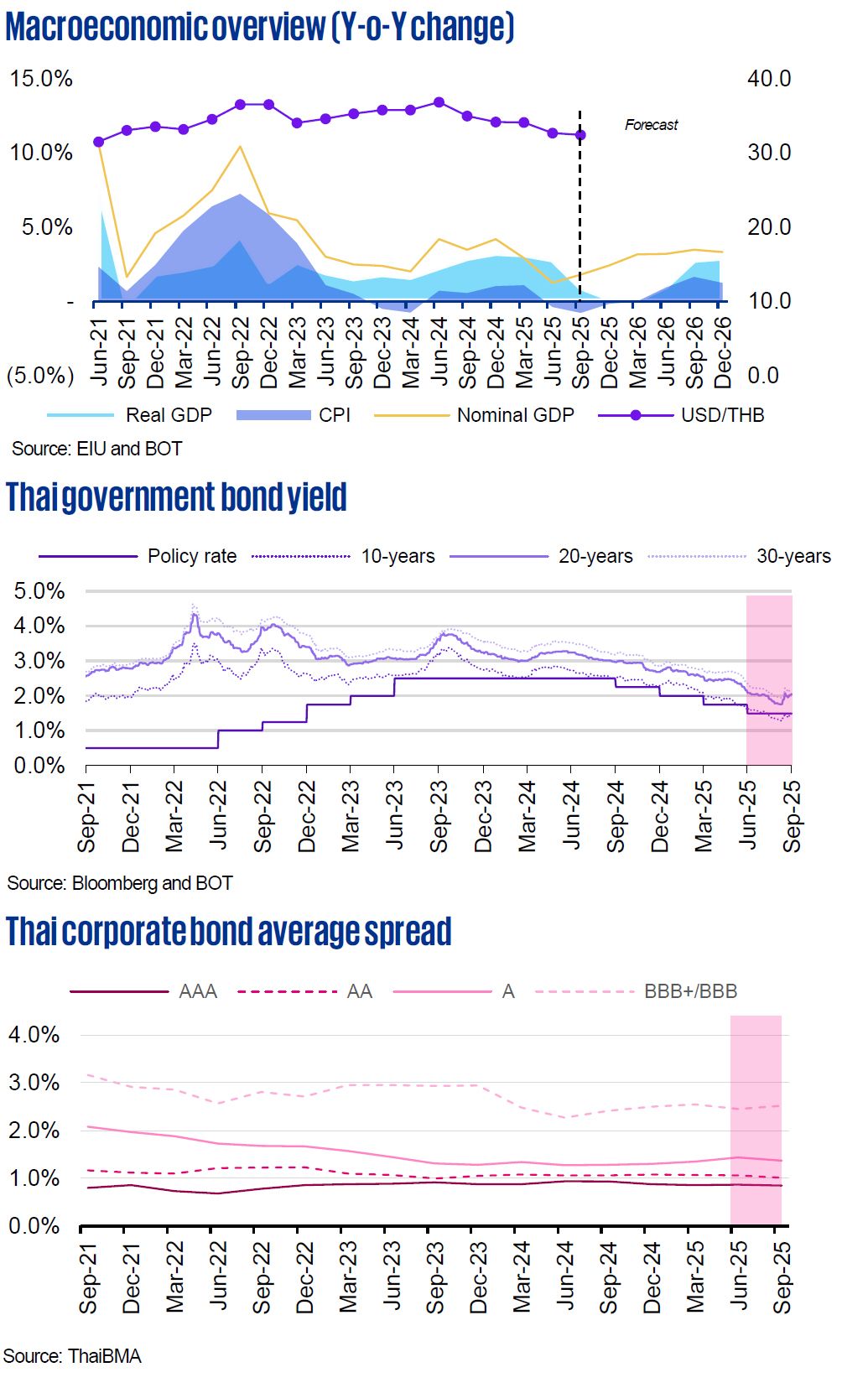
SET valuation metrics by sector (last five quarters)
The SET has eight key sector categories for listed entities. The three most common valuation multiples across five quarters in these sectors illustrate movement due to both economic fundamentals and the impact of global events on market sentiment.
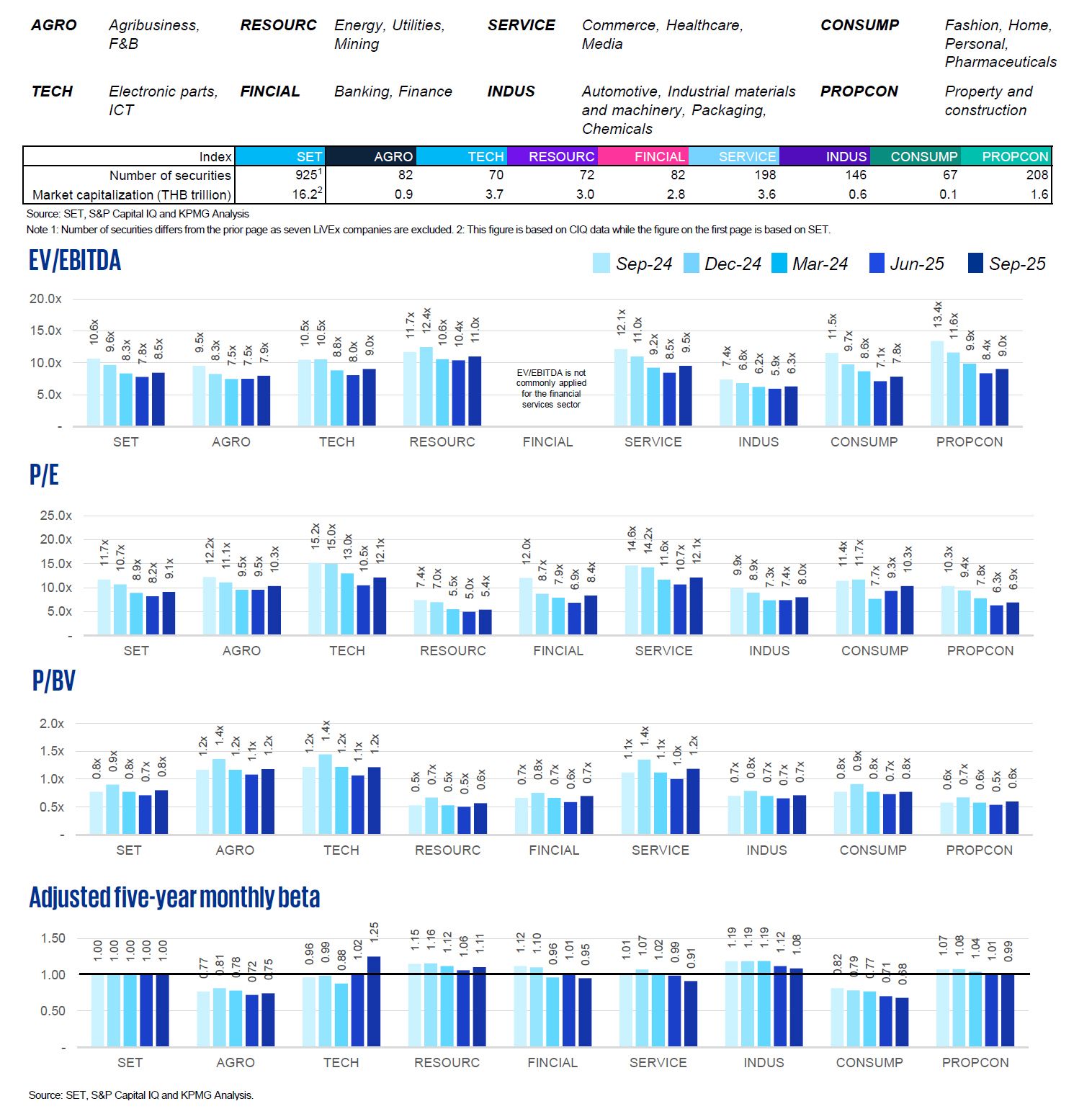
In Q3/2025, market multiples showed a recovery across all sectors, reflecting the partial stabilization of economic and political uncertainties.
Sector beta represents the undiversified risk of a sector. The higher the beta, the riskier it is for that specific sector. The stock prices of companies in the TECH sector experienced a significant increase in Q3/2025, making it the sector with the highest beta in the market.

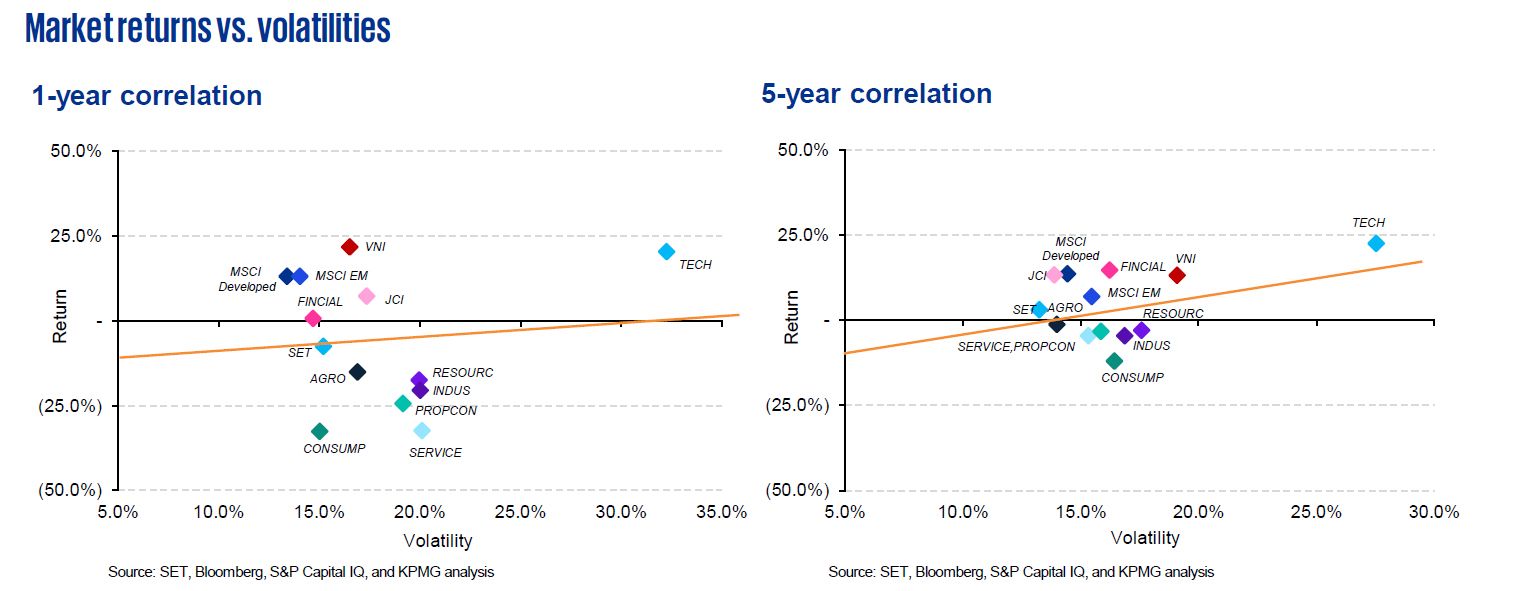
- Over both the one-year and five-year evaluation periods, the SET has continued to deliver lower returns compared to other indices. In Thailand, the TECH sector remains the top performer across both timeframes, whereas the SERVICE and COMSUMP sectors have delivered some of the lowest returns. The FINCIAL sector has reported positive one-year annualized returns for the first time this year.

- Total return index (TRI) is an index that measures the total return from investing in securities. It comprises (1) a return arising from the change in value of the securities or “capital gain/loss”, and (2) dividends paid, assuming they are reinvested in the securities.
- The dividend yield for 2025 continues to remain high largely due to depressed prices.
Data criteria
Thailand valuation multiples by sector
- The SET sector classification serves as the principal criterion for the illustrated sectors.
- The sector valuation multiples are based on the respective median.
- 12-month trailing multiples are derived from Q3/2024 to Q3/2025.
- The Q3/2025 multiple is based on the latest available financial statement information as at Q2/2025.
- The sectors’ betas are based on market capitalization-weighted adjusted betas, excluding securities with negative beta values.
- Data in historical periods may change according to Capital IQ’s retrospective adjustments.
Regression on returns and volatilities
- The total number of trading days per year is assumed to be 252 days.
- The period in the study is 1 October 2020 to 30 September 2025.
SET and SET TRI
- Annual dividend yields are based on dividend yields from Bloomberg.
KPMG Deal Advisory
"KPMG provides a full range of valuation services for all sell-side, buy-side, tax restructuring, fund raising, and joint venture transactions."
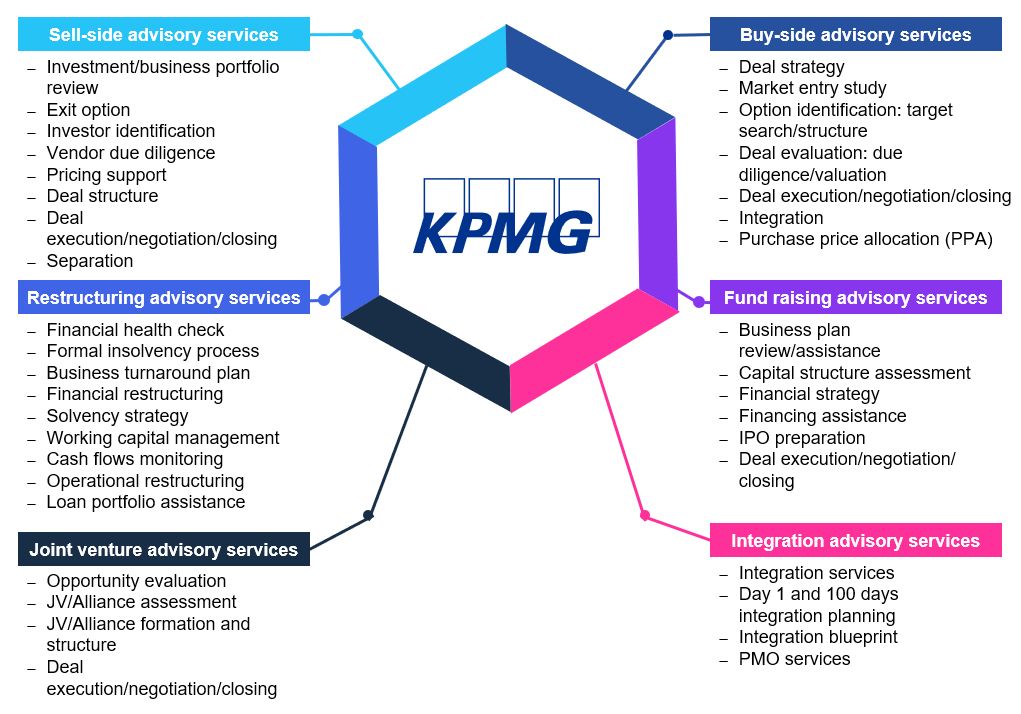
Key contacts
Connect with us
- Find office locations kpmg.findOfficeLocations
- kpmg.emailUs
- Social media @ KPMG kpmg.socialMedia

